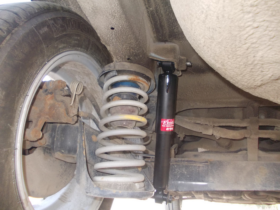Modern lightning protection systems
Direct lightning strikes have always been dangerous for structures and buildings of different purposes. Observations over the years have shown that in most cases, the cause of fires and further damage were lightning discharges caused by lightning. In this regard, work was carried out to create modern elements of building structures to ensure reliable lightning protection.
To date, lightning rods of various designs are commonly used to ensure this task. This is due to the fact that atmospheric discharges most often selectively strike metal elements that perform the function of grounding, and rising above the ground surface.
Structurally, lightning rod: is a product consisting of a lightning arrester, supporting structure, conductor, ground wire. Today, lightning rods can be of different types – mesh, rod, antenna, cable. In addition, in order to ensure the complex protection of buildings, in some cases lightning rods of a combined type are used, such as cable and rod.
Lightning rods are widely used as they are easy to produce and ensure high reliability during operation. In terms of their characteristics such structures are not inferior to the lightning rods, although usually installed on the buildings of great lengths.
Structures that have a large number of floors and a metal roof, placement of lightning arresters on them do not need, as their function is performed by the metal roof. In this case, a protective grid with a certain size of cells can be used as a lightning conductor.
To provide protection against atmospheric electrical discharges, you also need to provide protection against electrostatic induction. To do this, all existing metal equipment and apparatus located in the structure to be protected, switched to a special grounding electro-static induction protection. In this case you can not make a series connection in one chain of earthing elements. In this case it is allowed to connect the metal utilities, which are located under the ground.










Hello!! My name is Jeanine
I love to eat, travel, and eat some more! I am married to the man of my dreams and have a beautiful little girl whose smiles can brighten anyone’s day!